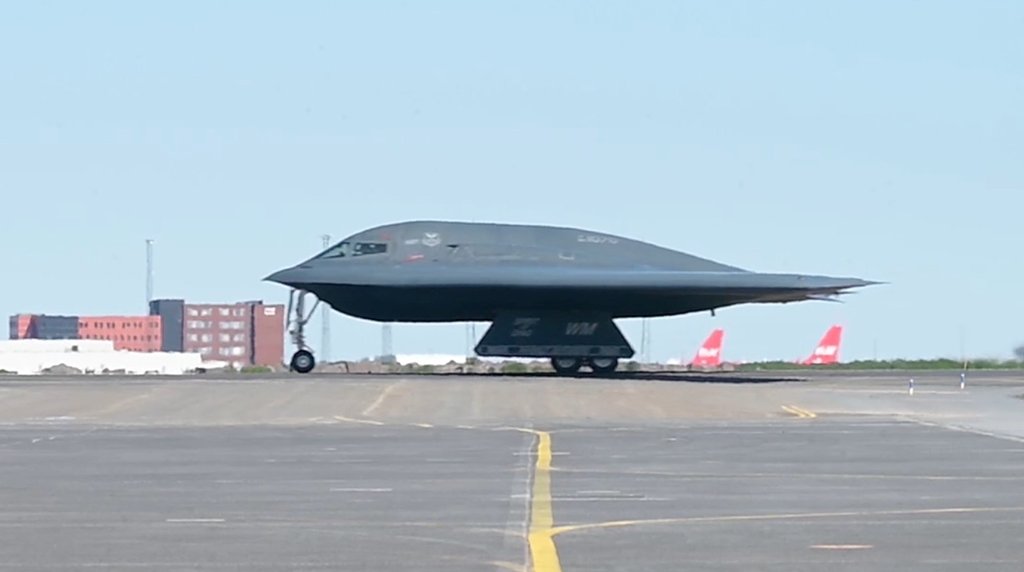[ad_1]

The B-2s have returned to Keflavik for the first time since 2021. It’s the first deployment since the bomber has resumed flying following five months of safety stand down.
Three B-2 Spirit bombers belonging to the 509th Bomb Wing from Whiteman Air Force Base, Missouri, landed in Keflavik, Iceland on Aug. 13, 2023, for BTF Europe 23-4. The deployment is the first one since the stealth bomber fleet returned to normal operations on May 22, 2023, after a 5-month safety stand down following the incident in December last year.
On Dec. 10, 2022, one of the 20 stealth bombers of the 509BW experienced an unspecified in-flight malfunction that forced the crew to carry out a successful emergency landing on the on base’s only runway 01/19. A fire erupted aboard the B-2 after landing causing damage to the aircraft. The incident came little more than one year after another B-2A suffered a landing incident on the runway at Whiteman AFB.
The root cause of the incident has not been disclosed.
It’s not clear how long the B-2s will operate from Iceland but BTF 23-4 does not mark the first time the stealth bombers deploy to Iceland: three Spirits operated from Keflavik for two and a half weeks, from late August to mid-September 2021, integrating and training with the U.K.’s typhoon fighter jets and Norway’s F-35s, and conducting extended deterrence missions in the High North region of the Alliance.
Previously, in 2019, one the three B-2A stealth bombers deployed to RAF Fairford as part of a Bomber Task Force, landed at Naval Air Station Keflavik, Iceland, marking the first landing of B-2 in Iceland. Back then, the “Spirit of Mississippi” (82-1071) conducted hot-pit refueling, which is a method of refueling an aircraft without shutting down the engines, before launching another mission.
“Each bomber task force mission underscores the prowess of our armed forces in navigating today’s intricate and unpredictable global security terrain, with a focus on fostering stability, security, and freedom across Europe.” said Gen. James Hecker, commander of U.S. Air Forces in Europe; U.S. Air Forces Africa and NATO Allied Command in a public statement. “In resolute unity, the U.S. upholds our nation’s commitment to foster peace and stability in Europe, unwaveringly collaborating with Allies and partners to thwart challenges against the sovereignty of nations across the region”
Leading the expeditionary bomber crew on their deployment is Lt. Col. Andrew Kousgaard, the commander of 393rd Bomb Squadron. He underscored the essence of dynamic force employment, describing it as a strategy that combines strategic unpredictability with operational adaptability Lt. Col Kousgaard affirmed, “The B-2 bomber is arguably the most strategically significant airplane in the world, but that doesn’t mean it’s inflexible; dynamically deploying the bombers forward is a unique and important capability.”

The use of Keflavik as a forward operating base for the B-2 is particularly interesting, as it expands the capabilities of the stealth bomber well into the strategic Arctic region. In fact, B-2s don’t operate away from Whiteman AFB, in Missouri, too often: they are able to hit their targets with very long round-trip missions from their homebase in CONUS (Continental U.S.) as demonstrated by their periodic trans-Atlantic training missions, extended nuclear deterrence sorties in the Korean Peninsula, as well as during real conflicts, such as the Libya Air War in 2011, Allied Force in Serbia in 1999 or the more recent air strike on ISIS in Libya. A few selected overseas bases, like RAF Fairford, in UK; Lajes Field in Azores, Portugal; Andersen Air Force Base, in Guam; and Diego Garcia, an island of the British Indian Ocean Territory, an overseas territory of the UK, have hosted the bat-wing bombers for deployments.
As we have reported in detail, the B-2 and B-1 fleets, will be both replaced in the 2030s by the B-21 Raider, the U.S. Air Force’s next stealth bomber built by Northrop Grumman that was unveiled on Dec. 2, 2022.
[ad_2]
Source link
